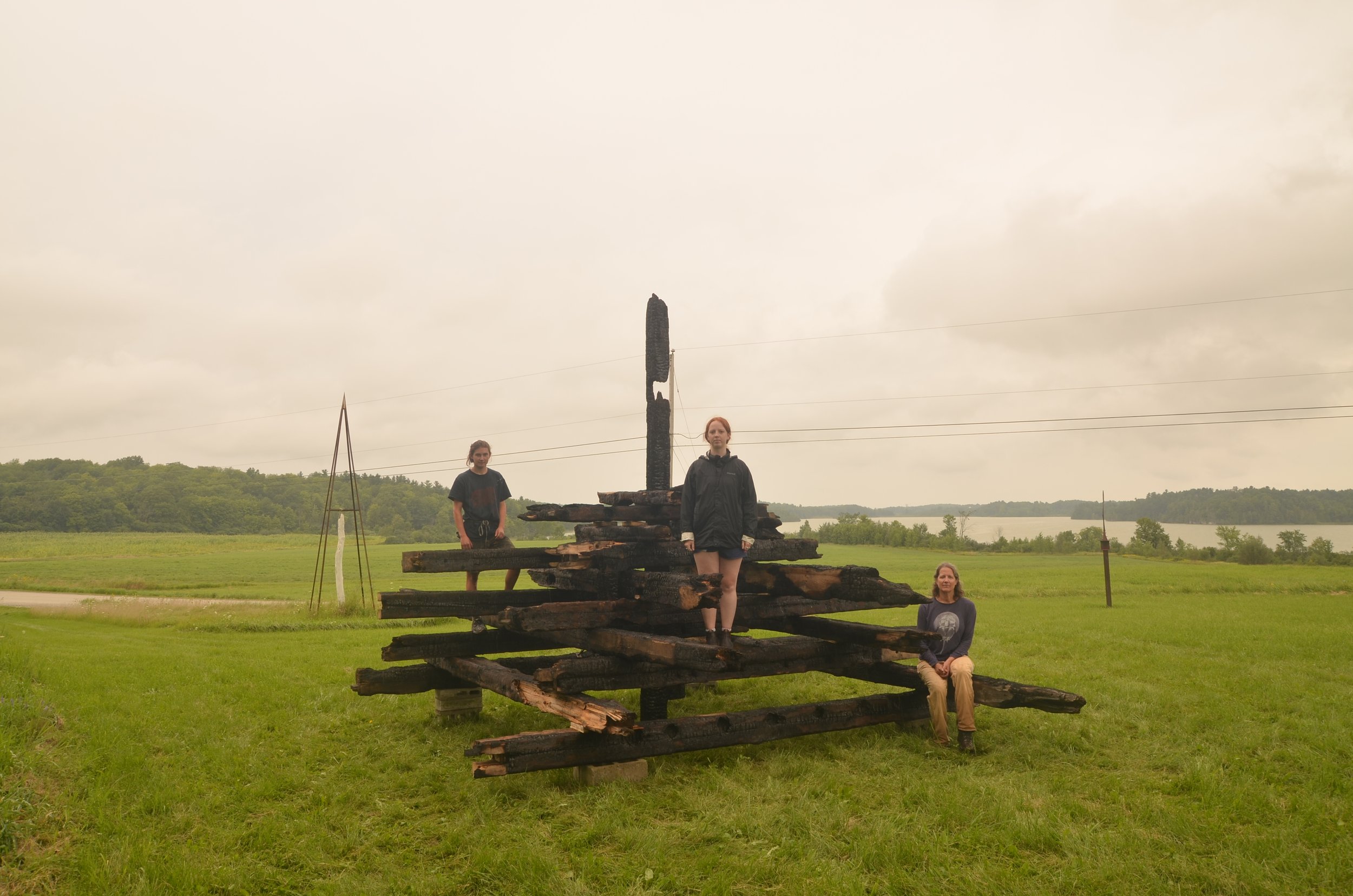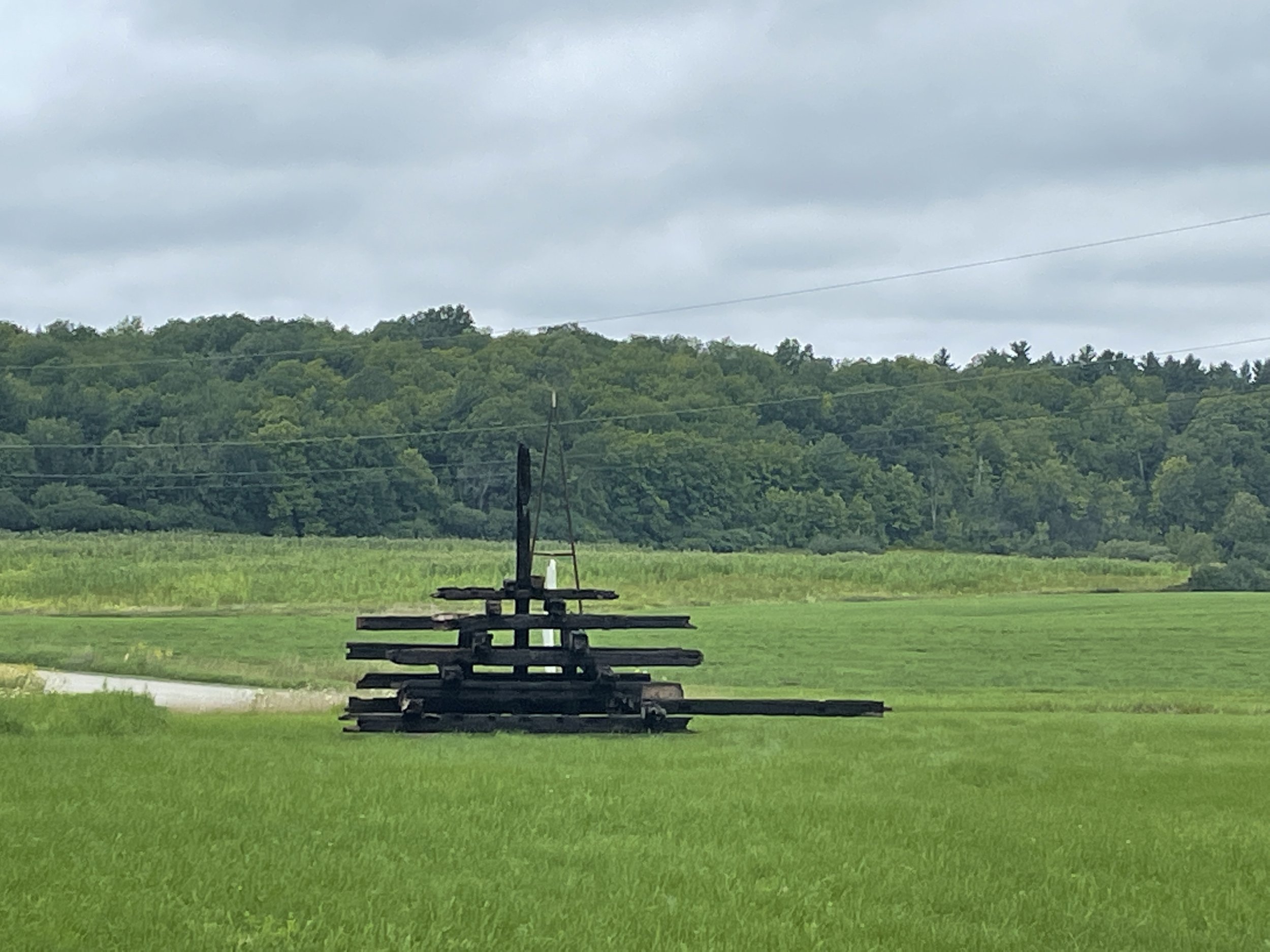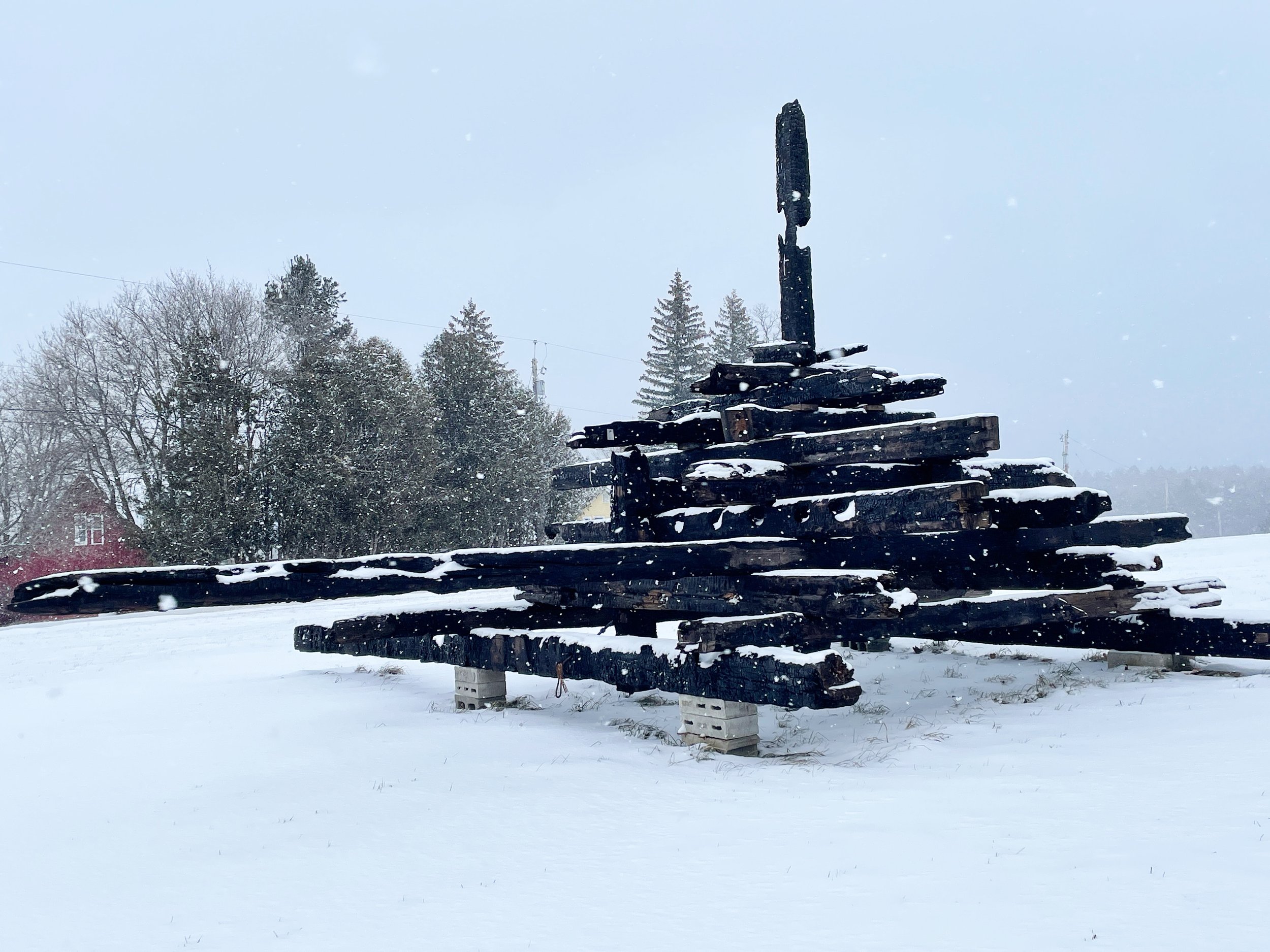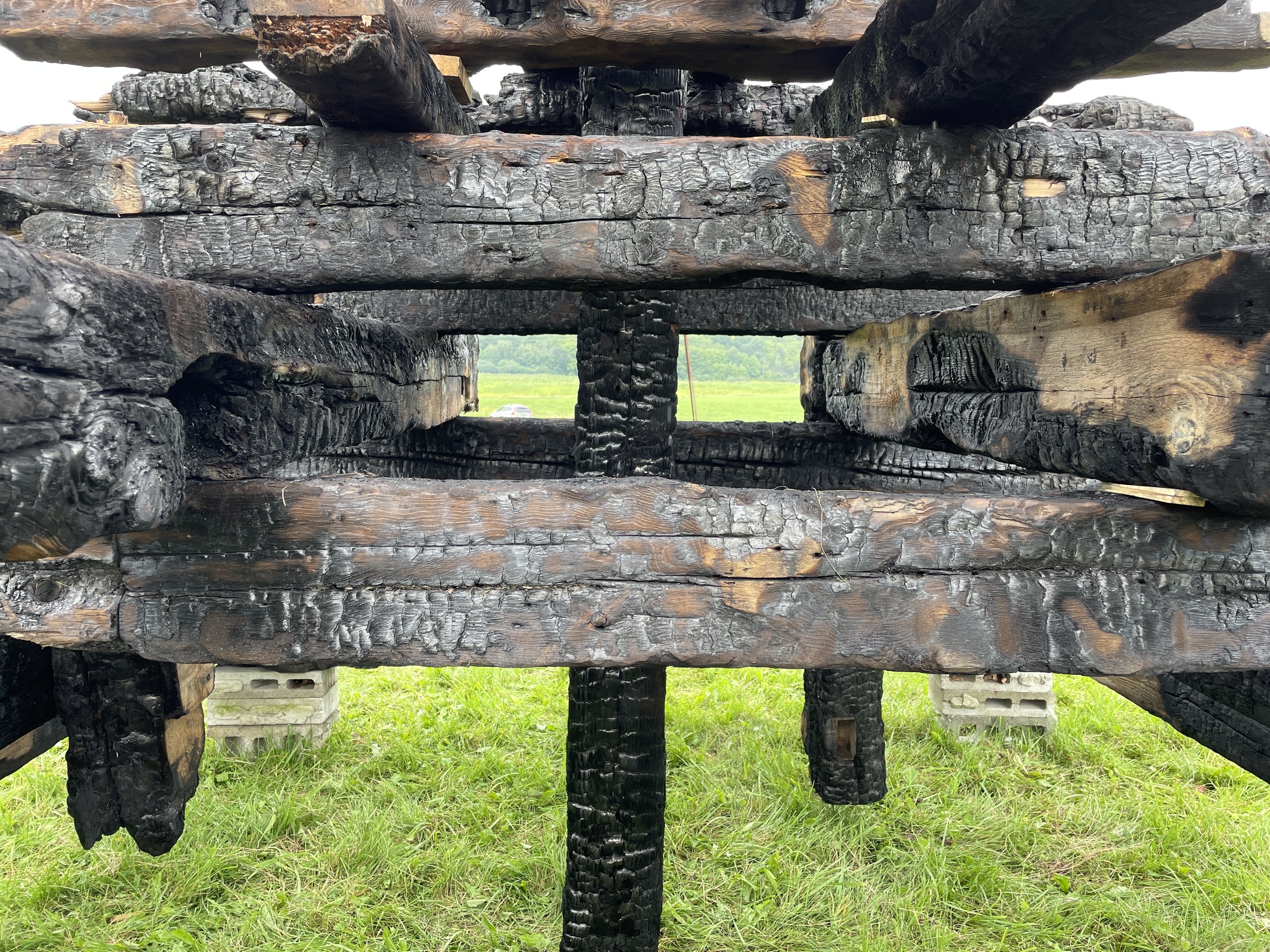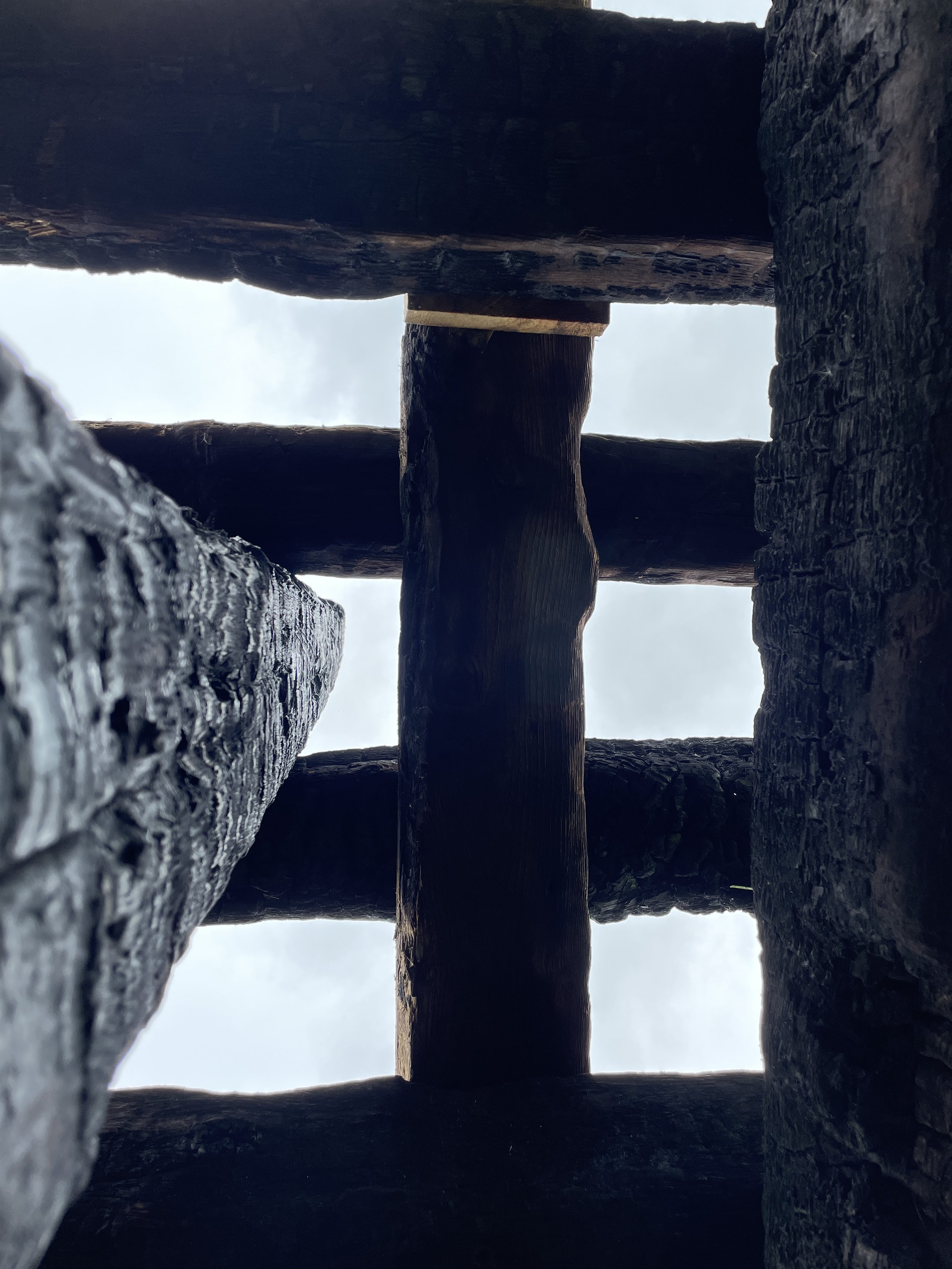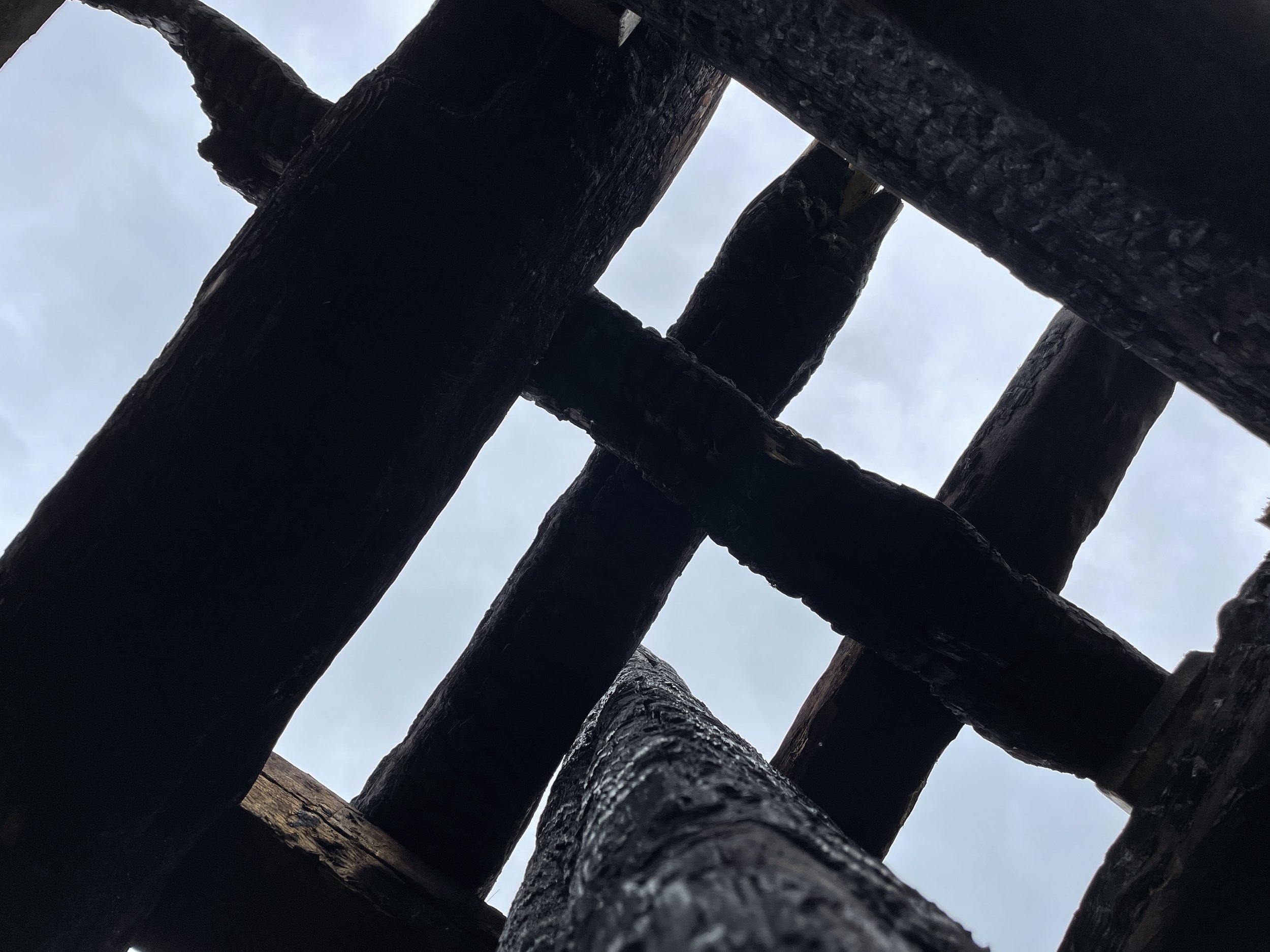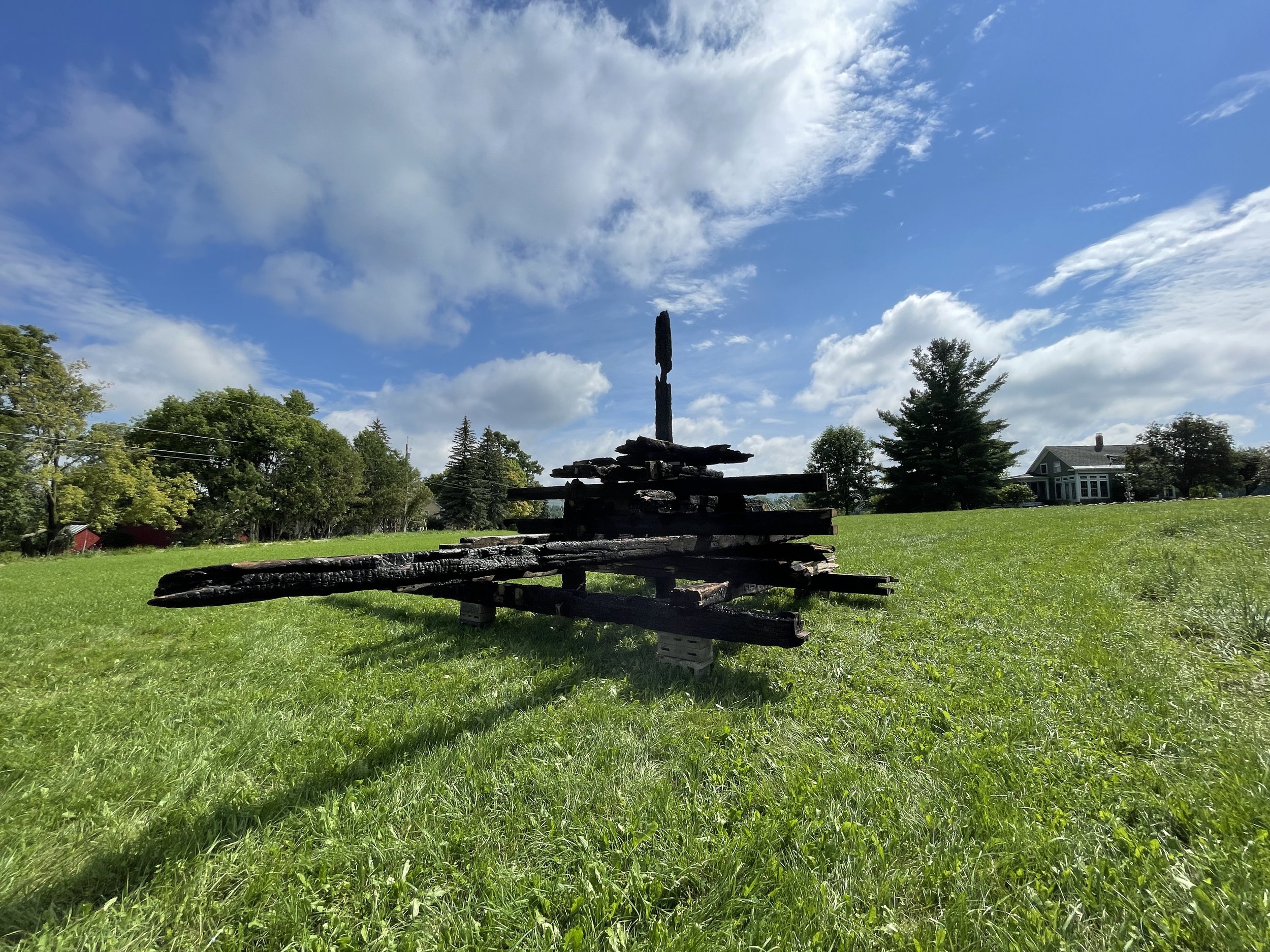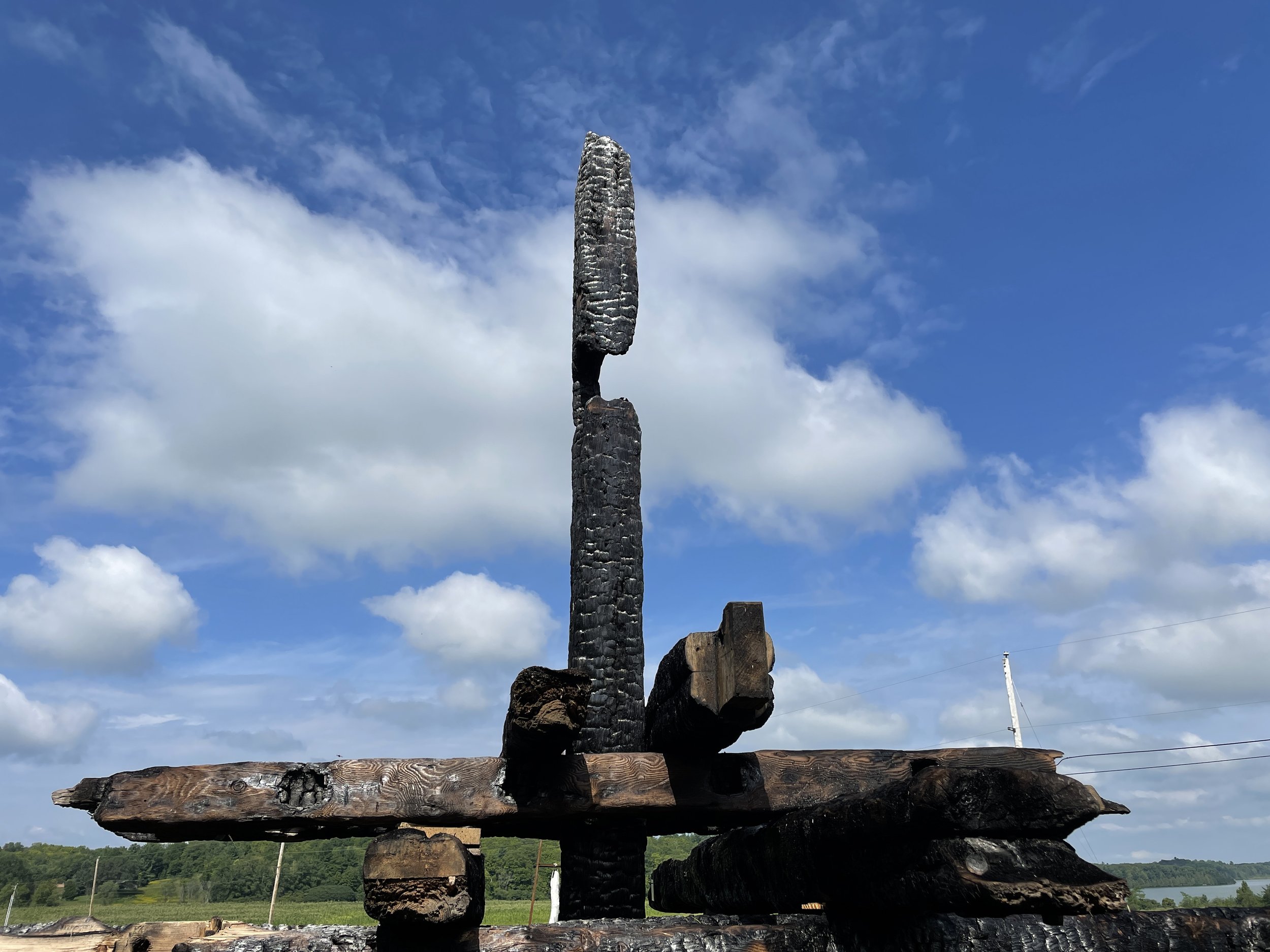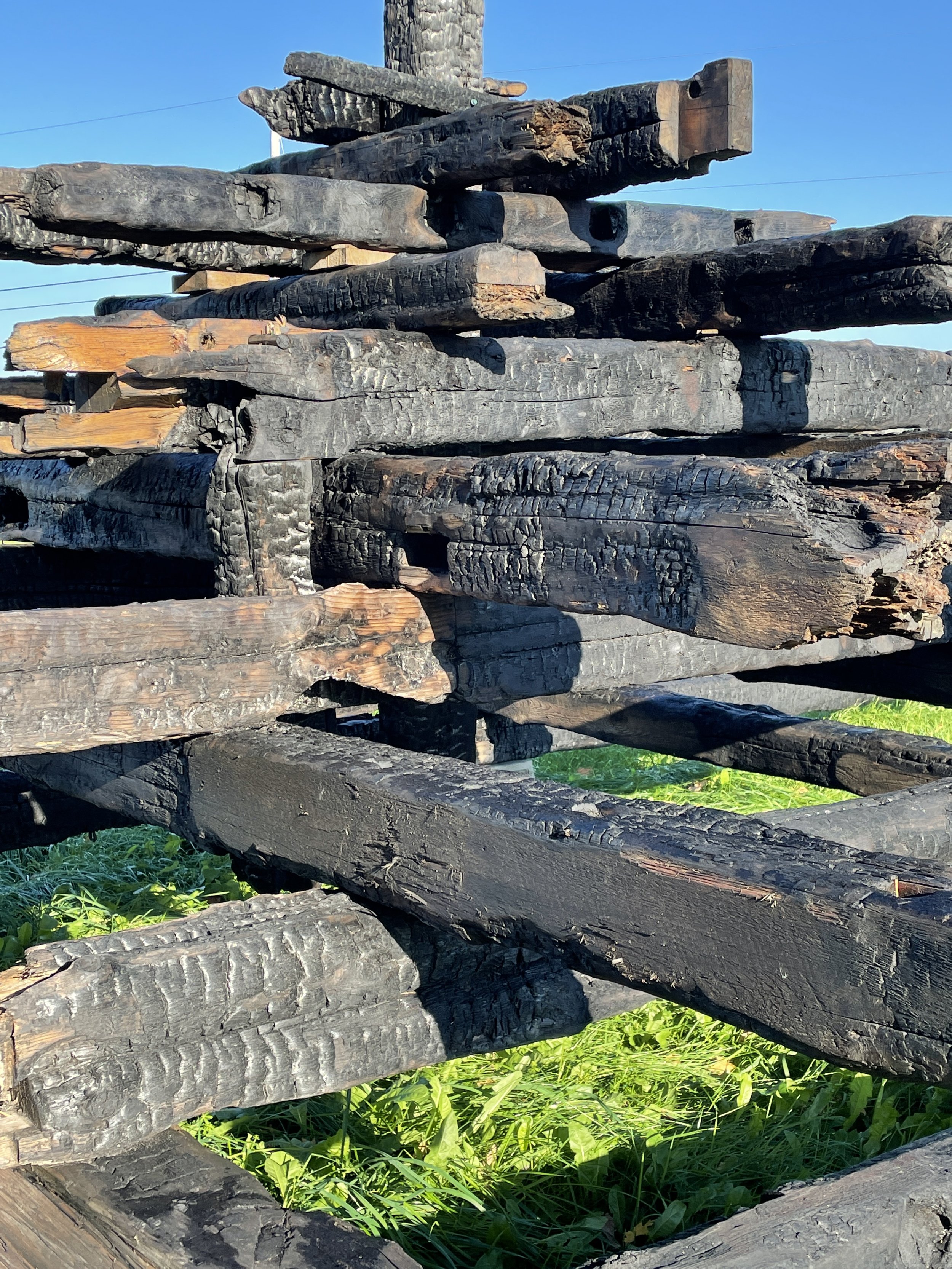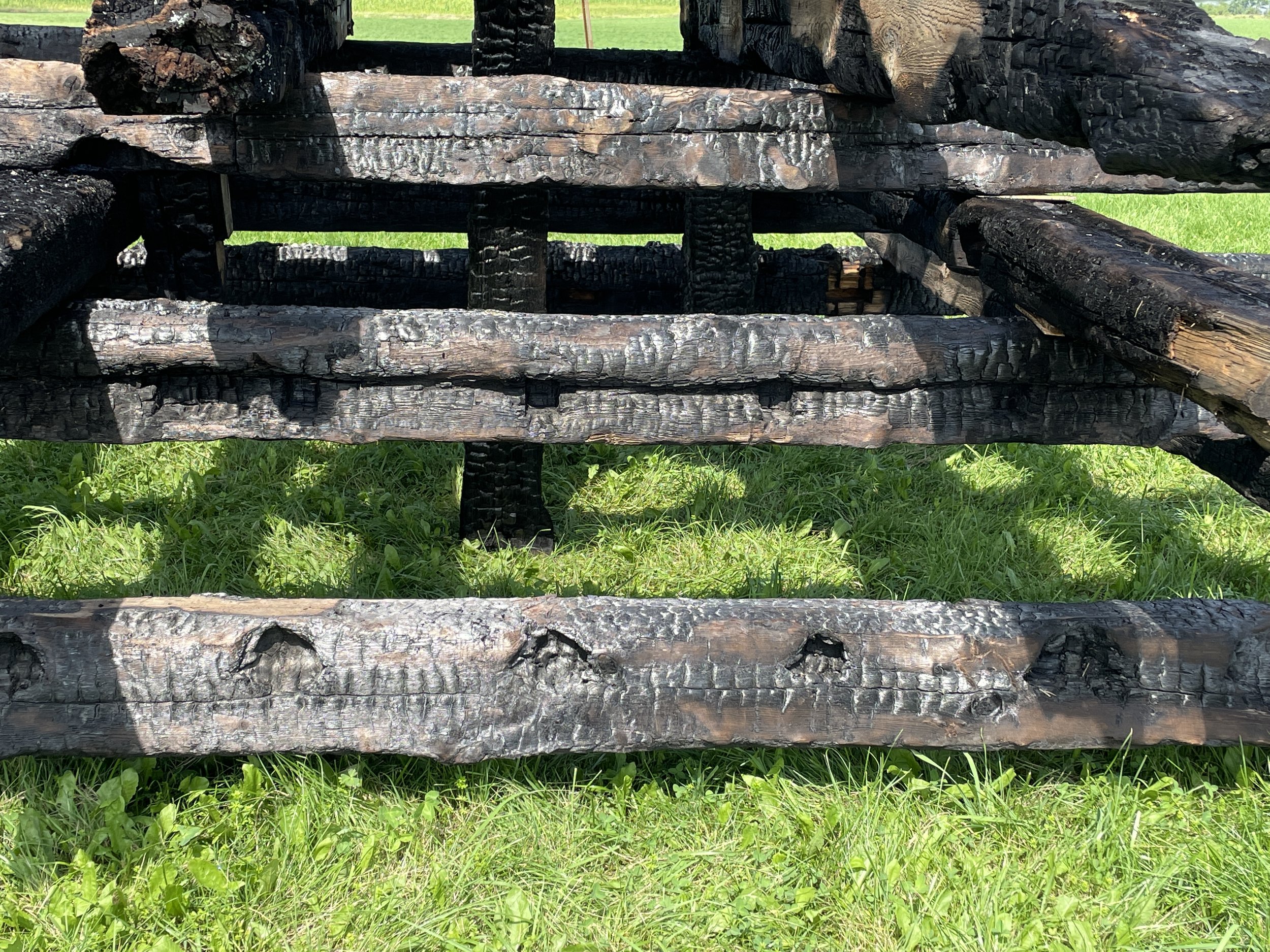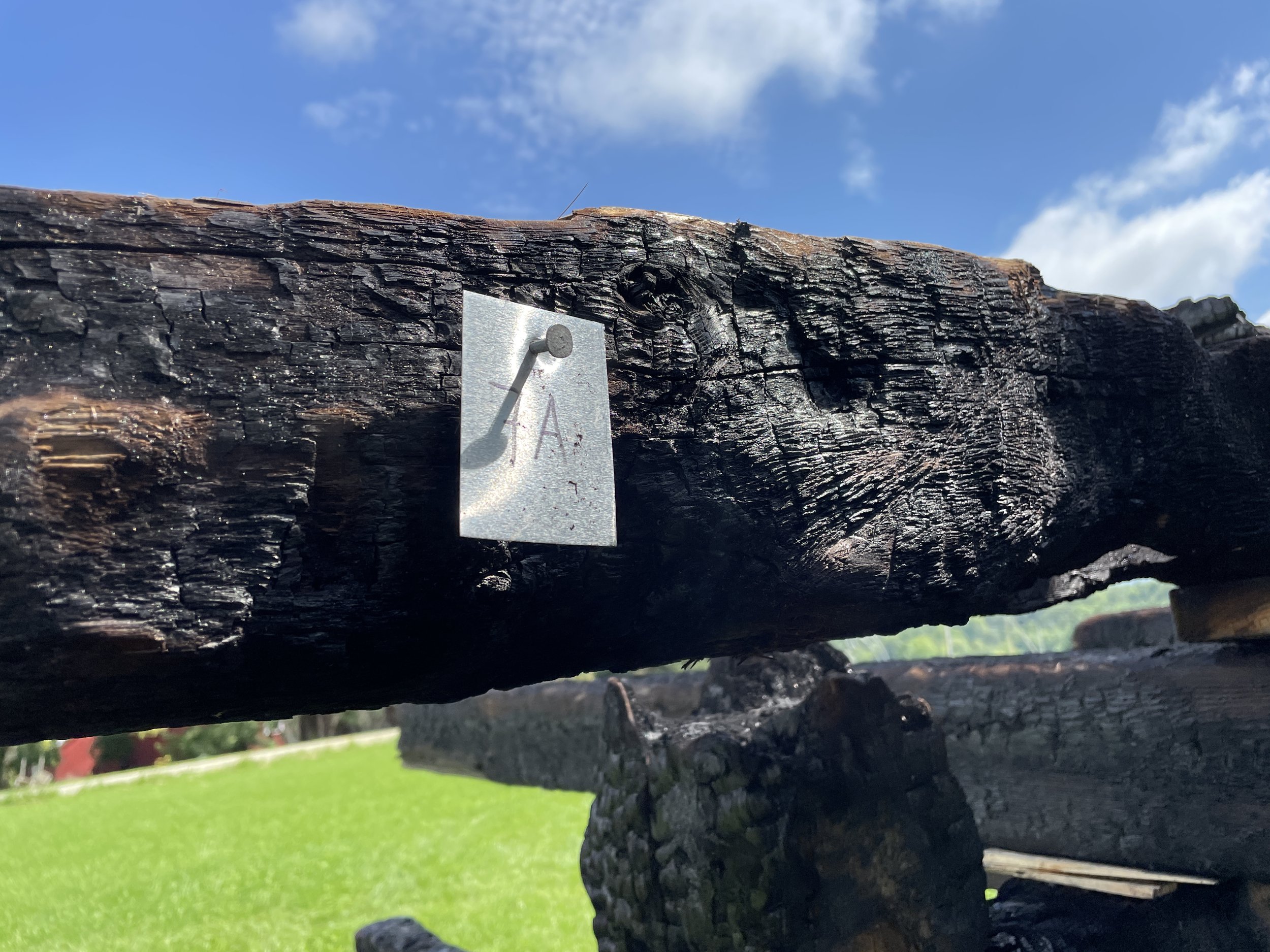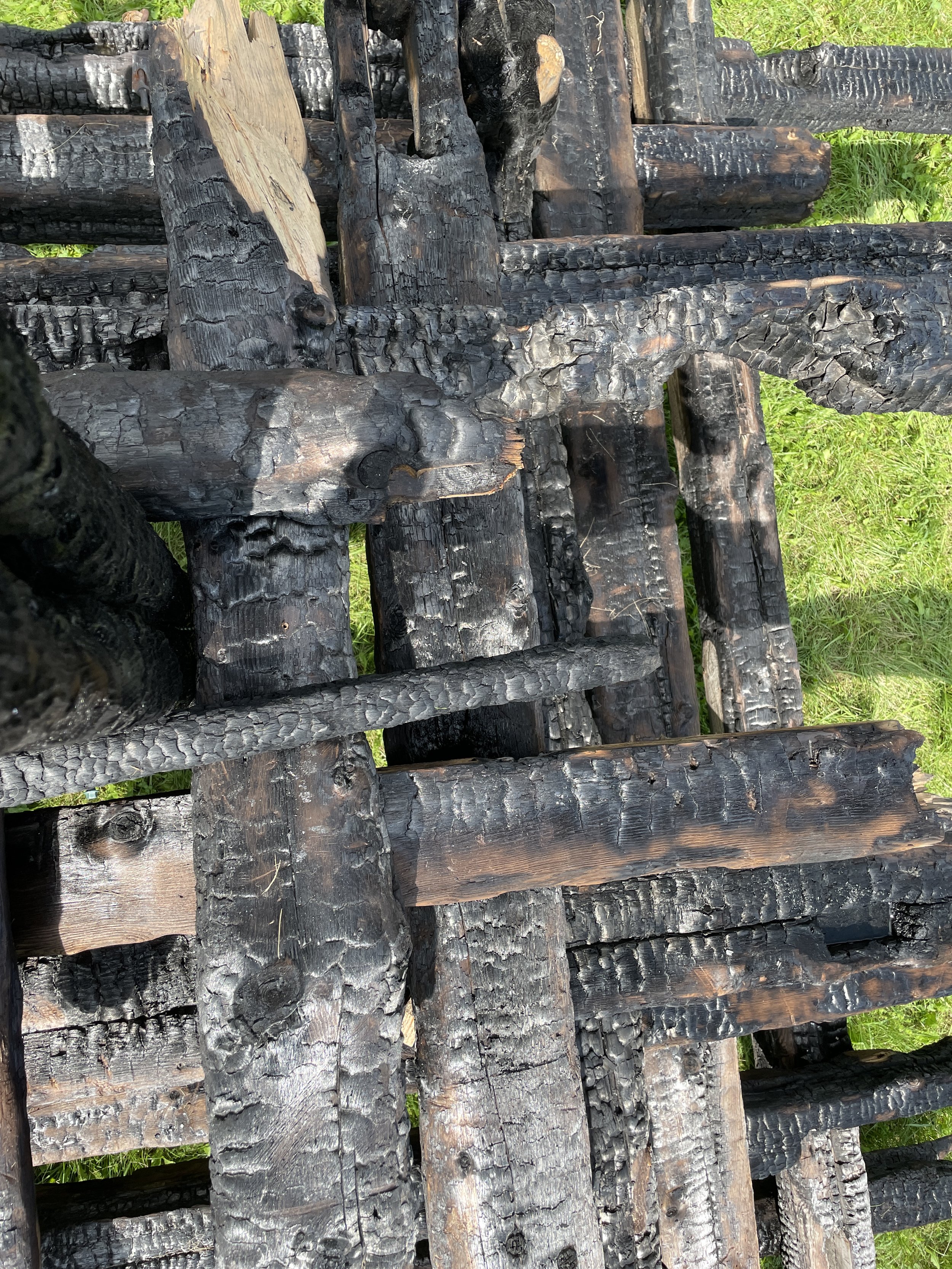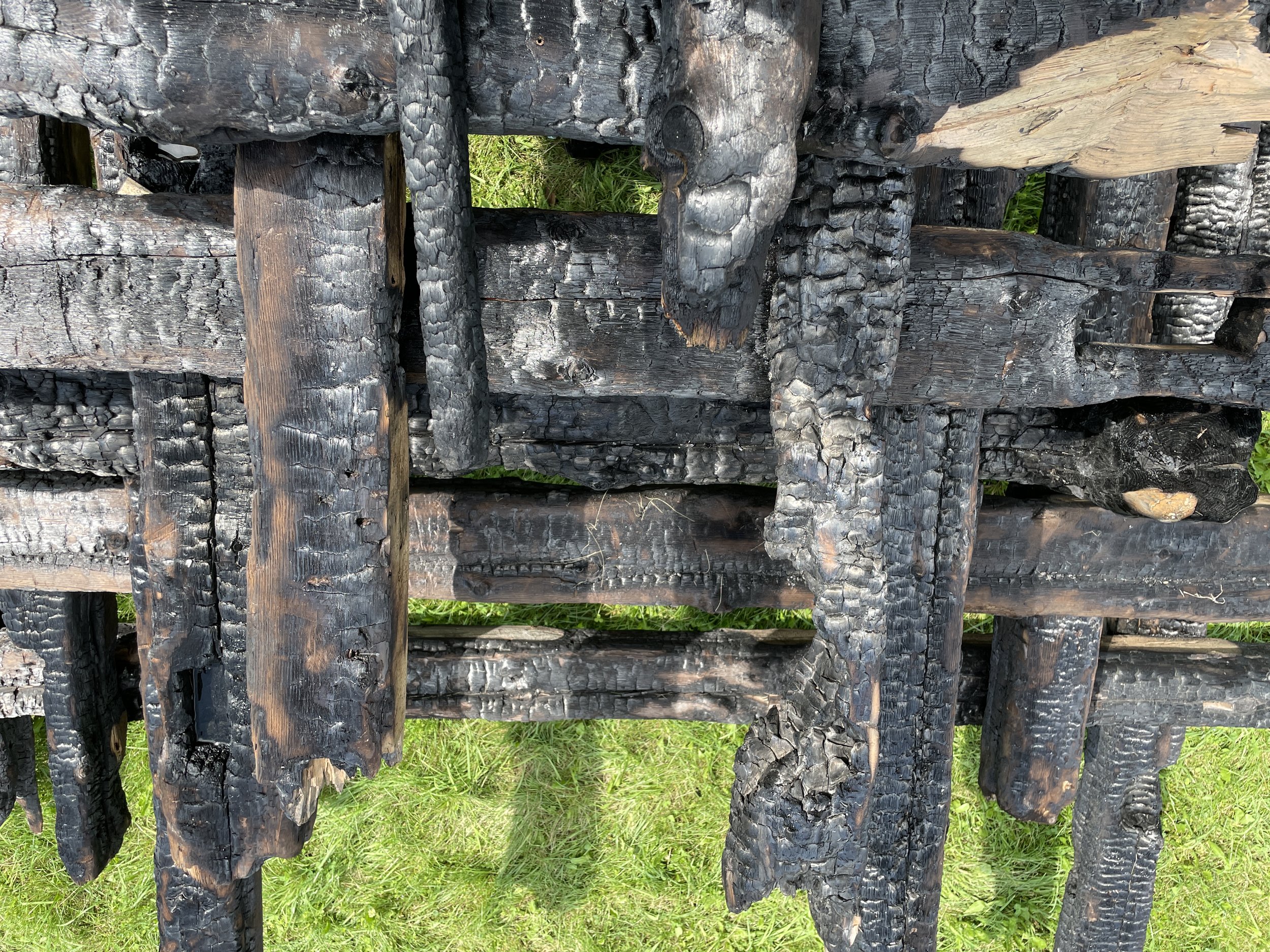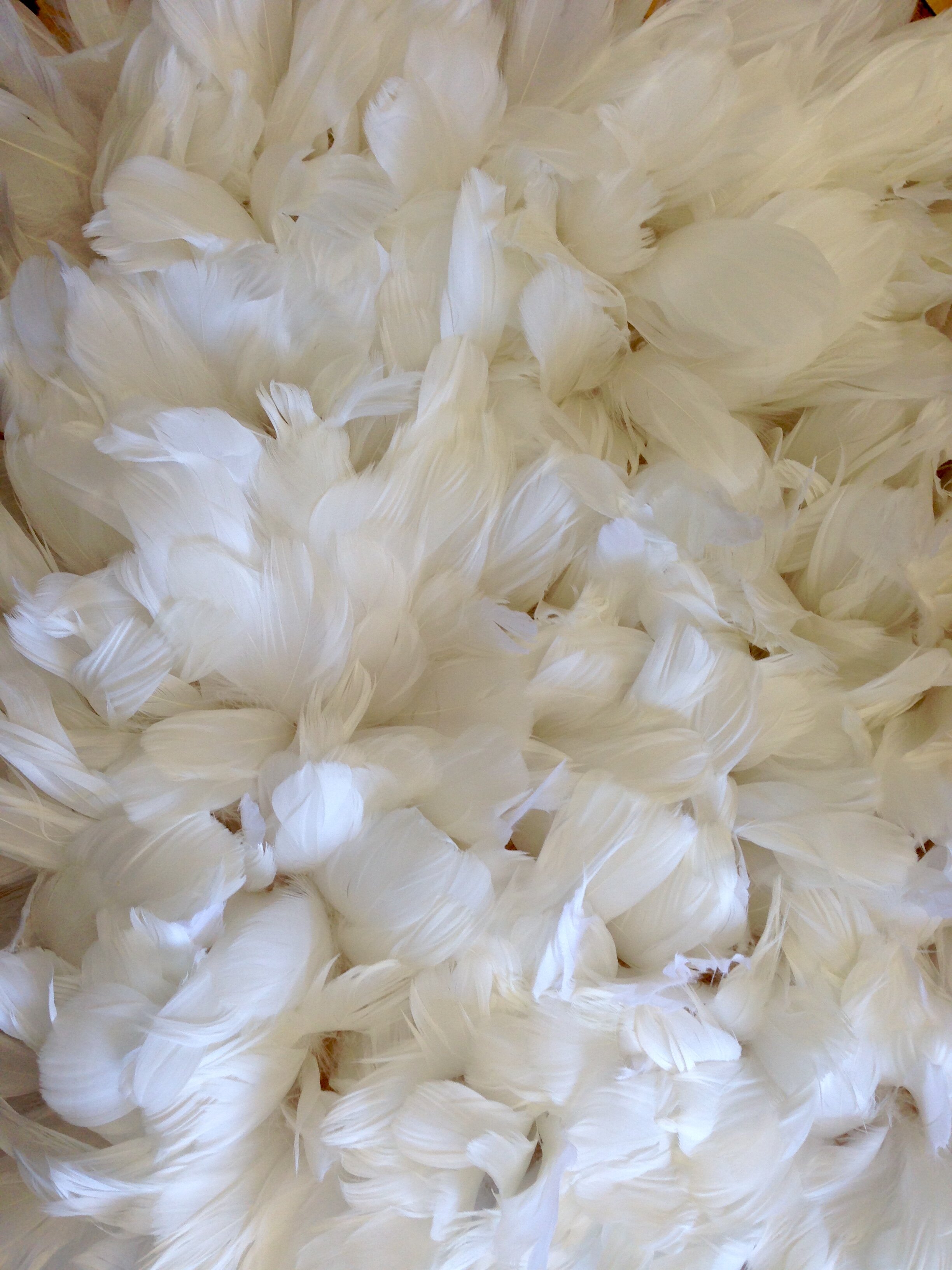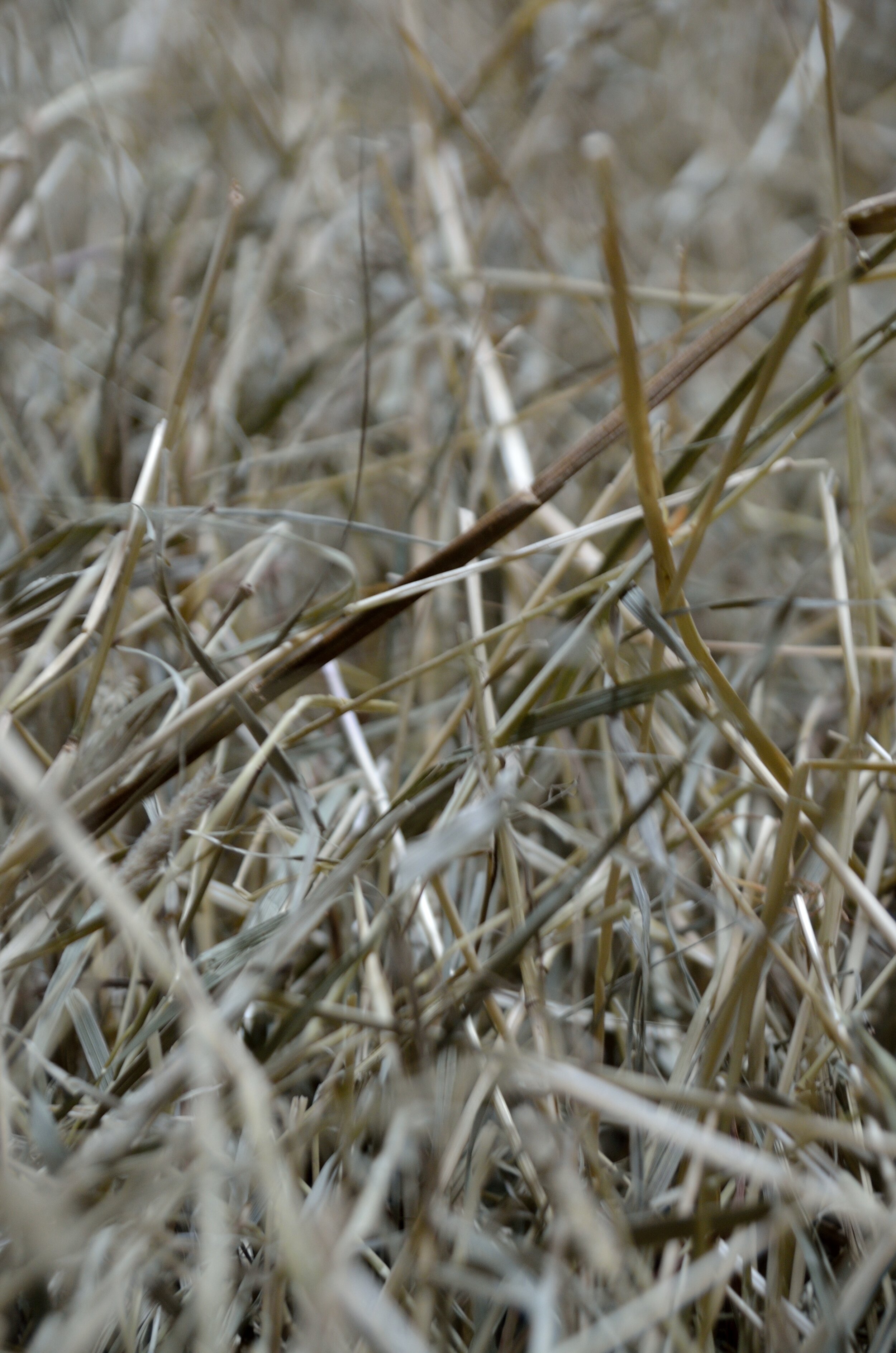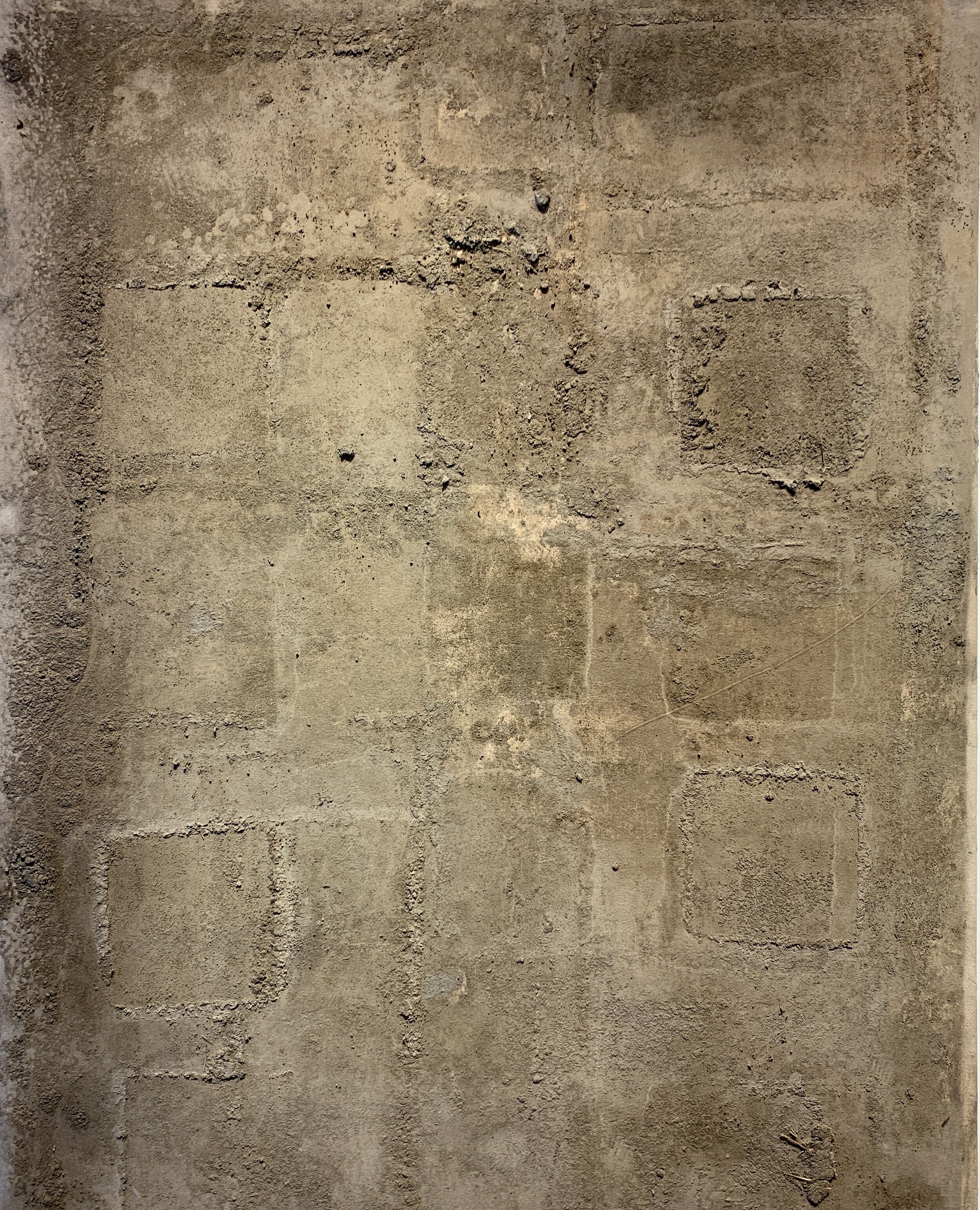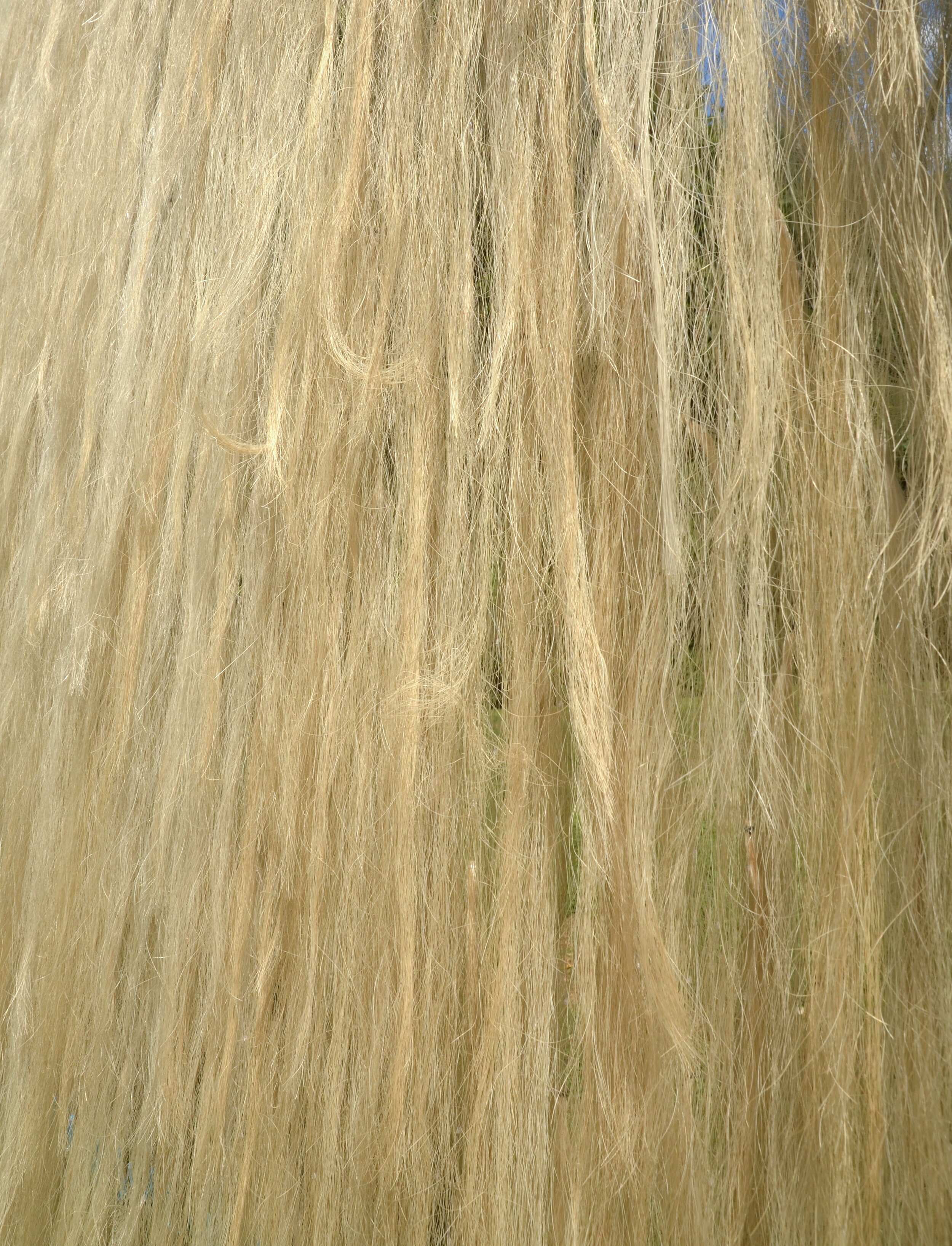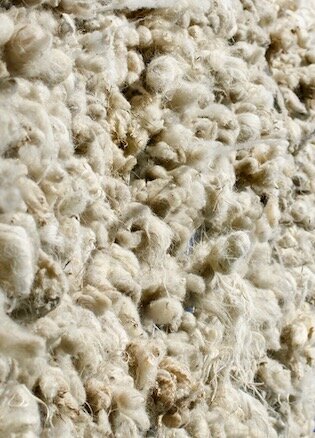Landmark I, II, III →
PERMANENT-ENVIRONMENTAL
Cairn, 2021, 27 x 26 x 14’, Reclaimed Charred Barn timbers. installed on studio property.
Cairn is a monumental sculpture comprised of reclaimed timber salvaged from a historic dairy barn which tragically burned down at Shelburne Farms, in Shelburne, VT. Cairns are found all over the world in every ecosystem, providing a path in inclement weather or unknown territory. They mark burial spots, or are spontaneous sculptures along waterways, a way of marking that one has passed by on this route. This sculpture represents a marker of passage of a barn, a memorial for the agricultural architecture in Vermont. This project was prepared in partnership with Building Heritage.
In the fall of 2020 I offered online mentoring with two environmental studies students from two different institutions. As online work became the norm during the stay at home order in America, many found these distanced conversations were not enough; they felt thin and left participants craving more interaction. We started an online journal as a way to continue our developing thoughts from our synchronous Zoom sessions, offering a conversation of reflections in contemporary art, readings, videos, poetry and films, mixed with repeated concepts of migration/immigration, home, sanctuary, and place. This online journal provided a new method of mentoring. I believe we all learned what a gift each entry and response from afar became during this time.
“Cairn: “large, conical heap of stone,” especially of the type common in Scotland and Wales and also found elsewhere in Britain, 1530s, from Scottish carne, akin to Gaelic carn “heap of stones, rocky hill” and Gaulish karnon “horn,” perhaps from PIE *ker-n- “highest part of the body, horn,” thus “tip, peak.” *”
Through the lens of art, environmental studies and education, two students and an artist embrace strategies for connection during a time of climate, social and pandemic concerns. The spontaneous call and response entries in an online journal take the reader on a journey of finding one’s place in a time of displacement. By summer 2021, we were able to meet in person and actualize the sculpture we had conceptualized during our journaling.
Below are excerpts from the journal of Cairn
“FALL 2020
11/12/2020 12:40 PM Jill
This morning, when we met on Zoom, we spoke about how we could create an art project that focuses on place attachment, land relationship and could address our climate anxiety. Speaking on climate issues, collaborating on ideas and addressing our thoughts on this platform can be a thoughtful online conversation during the COVID-19 pandemic. I am excited to engage with both of you.
I have been revisiting some notes from The Place Where Project. I am thinking about the impact of visual storytelling, a children’s map (A.A Milne: Winnie the Pooh) and making work that gives a sense of belonging, that everyone can engage with or feel supported in.
OUR WORLD IS DISPLACED IN COVID.
I am thinking about the importance of living integrated with all species in this time, finding the space between us to still celebrate our landscapes and to still be transformed by our places. Spaces alive with light and that are sacred and sacred having different meanings?
I think about the idea of spaces for the soul seen on all different scales: What does this look like in sculptural form? The idea of creating for the soul, again, what does this look like on different scales. I have been working with clay, to get my hands dirty. I find it is meditative. I am wondering what your daily practices are and how both of you work with your hands.
Are we going to create a community based sculptural piece?
”
“12/31/2020 11:51 AM Clark
A POSITIVE EXPLOSION HAS TAKEN PLACE!
The cairn has brought us language and anchor around each other and our ideas. We are merging together materials and concepts into something, some form, that shall no doubt take place soon. I could not have expected this conversation...the cairn not only translates words from human to land, but human to human. What form we are speaking!
”


